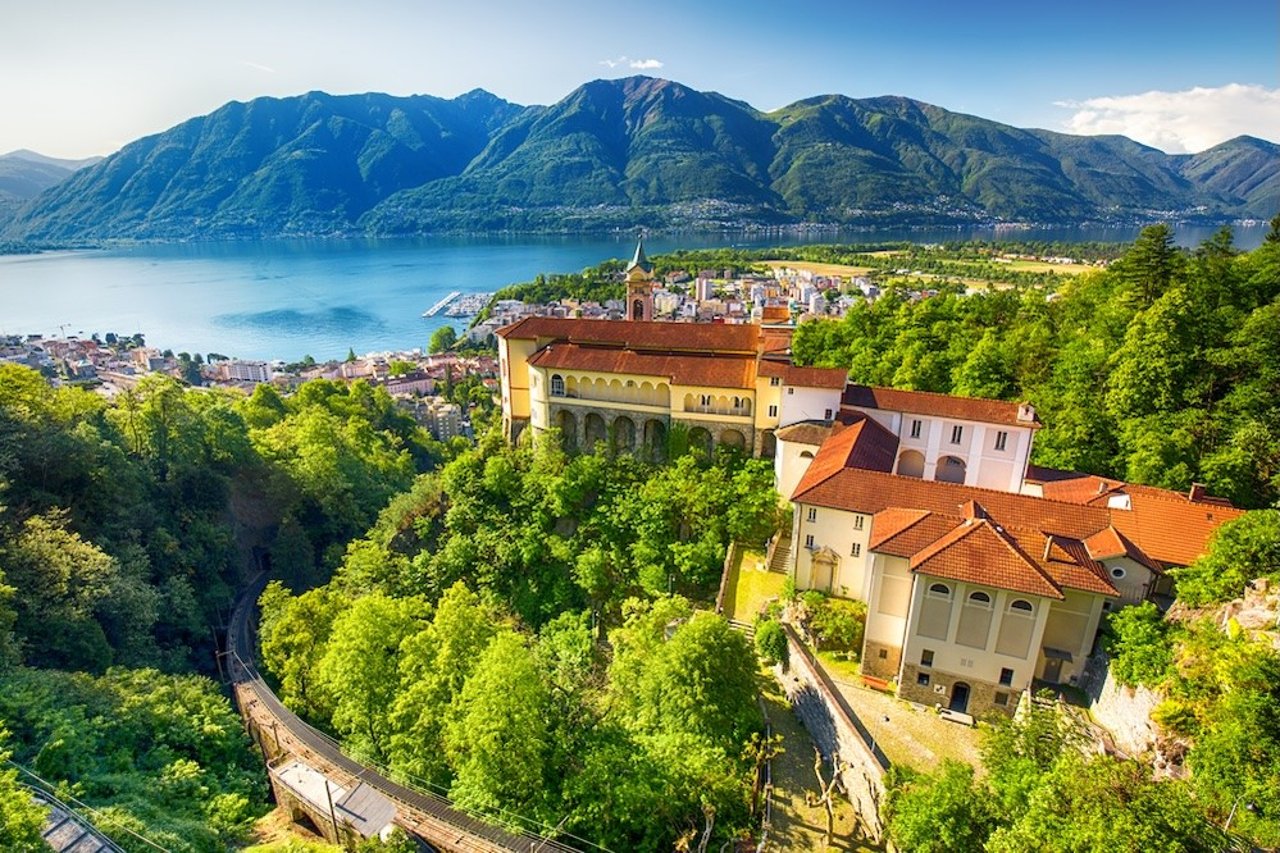Locarno History: From a Humble Town to a Renowned Swiss Gem
On the surface, Locarno may look ordinary to you, defined by a mixture of old and new buildings, surrounded by a lake and a mountainous landscape. But hidden within is a rich history featuring vibrant culture, trade, conflict, diplomacy, and so much more.

From initially being home to a population of fishers and farmers, Locarno has evolved over the years to become a vital hub for trade and entertainment, to mention a few. In fact, people flock in their thousands to attend the famous yearly film festival and enjoy other tourist attractions in the area. Want to know more about Locarno’s journey to becoming what it is today? Here’s a look at the town’s history.
Locarno before and after civilization
The first inhabitants lived along the shores of Lake Maggiore during the Neolithic period. They were mainly drawn by the fertile land and temperate climate. Excavations by archaeologists have unearthed ancient tools, pottery, and burial sites, a sign of a well-established community that relied on agriculture, trade, and fishing. Celtic and Ligurian influences in artifacts indicate Locarno interacted with neighboring areas more during the Bronze and Iron Ages.
The discovery of Roman era tombs between 1946 and 1949 suggests the presence of the Roman city around the vicus of Muralto region. Roman influence is evident in artifacts like coins, pottery, and architectural remains. Whereas not as famous as bigger Roman cities, Locarno connected various regions, enabling trade and cultural exchange between Roman Gaul and the Italian Peninsula.
Medieval Locarno as a strategic hub
The medieval period saw Locarno position itself as a trade and military hub. The town’s location at the intersection of Via Cittadella and Via S. Antonio placed it at vital crossroads where commodities from the Alpine regions and beyond were exchanged.
Ever heard of the Orelli, Magoria, and Muralto families? These are some of the noble families that ruled Locarno during the medieval times. They mainly fortified the town with towers, military outposts, and castles, including the popular Visconteo Castle. This particular castle was used as an administrative center for centuries before suffering damage though it was later reconstructed. Now, it serves as a museum and home to thousands of artifacts, including a rare collection of Celtic helmets and a range of medieval armor and weapons.
Locarno becomes a Swiss Confederate
Locarno was ruled by a noble family from Italy (The Rusca) under the authority of the Duchy of Milan in the late Middle Ages. Their reign ended in 1503 when the Confederates conquered Locarno. However, the Visconti Castle remained under French control until 1513, when they handed it over to the Confederates. Locarno eventually became part of the Swiss Confederation in 1516 through the Treaty of Freiburg. From then, it was ruled by governors from the 12 cantons but retained some local autonomy.
Locarno experienced religious tensions during this period. For instance, Swiss reformers like Zwingli and Ulrich spread into Locarno, converting many to Protestantism. However, given that the town was mainly governed by Catholic Swiss cantons, this reformation faced much opposition. Many Protestants were forced to flee, with some going to live in Zurich, where the community was more welcoming.
The Peace of Locarno (1925)
Locarno became a symbol of peace and diplomacy when it acted as a neutral host during the signing of several agreements after World War I. The parties involved included France, Germany, Belgium, Italy, and Great Britain.
Because of the treaties, the political climate of Western Europe became calmer. The end results? Lesser tensions and improved chances of reconciliation. Germany also reaped big as it got to be accepted into the League of Nations in 1926. Although the legacy of the treaties was later overshadowed by World War II, it still depicts Locarno as a historic site for European diplomacy.
The rise of the Locarno film festival
The region’s history wouldn’t be complete without talking about this event. It is one of the most popular and esteemed film festivals in Europe. Founded in 1946, it sought to advance cinematic art and cultural exchange by showcasing films in different categories, such as avant-garde, feature-length narratives, documentaries, and more.
The screenings are aired openly at Piazza Grande, a public square in the heart of the city. The venue is surrounded by historic buildings, which not only offer a picturesque view of the adjacent mountains but also Lake Maggiore creating a breathtaking atmosphere. Many groundbreaking films have been introduced over the years, not to mention the vital role the festival has played in launching the careers of multiple filmmakers in Switzerland.
Locarno in the 21st century
Modern-day Locarno is situated in southern Switzerland, in the Ticino canton along the shores of Lake Maggiore. The weather is quite nice–it’s what you’d describe as temperate with dry summers. And is it still a vital economic hub in the region? Yes, thanks to its closeness to Italy and major Swiss cities.
Talking of agriculture, the practice is also common, given the community has set aside about 50% of the land for farming. The rest of the region comprises forests, rivers/lakes, buildings/roads, and undeveloped land, which creates a balanced and diverse landscape.
Locarno has a small population of a few thousand people, mostly resident foreign nationals. Languages spoken include Italian, German, Serbo-Croatian, French, and Romansh.
Tourists have developed a soft spot for Locarno, and for good reasons. From scenic hikes to lake cruises, visiting the iconic Visconti Castle, and attending the film festival, there’s always something exciting happening in Locarno.
Make Locarno your home
Thinking of moving to Locarno? Suisse Immobilien Group, is a great real estate agency in Lugano, Ticino, that’s ready to help. It could be you want a rental home, luxury villa, commercial property, apartment, or penthouse in Ticino, we’ll find the perfect match. Just state what you need, and leave the rest to us. It’s that simple!